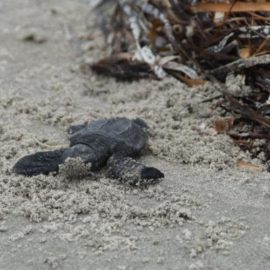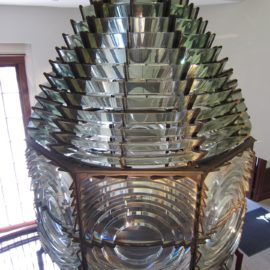
Our deltas are sinking but some are not. Land people lived in for generations is disappearing as they watch. They need help but what can be done? NASA is entering the picture.
Erosion, sinking land and sea rise from climate change have killed the Louisiana woods where a 41-year-old Native American chief played as a child. Not far away in the Mississippi River delta system, middle-school students can stand on islands that emerged the year they were born. NASA is using high-tech airborne systems along with boats and mud-slogging work on islands for a $15 million, five-year study of these adjacent areas of Louisiana. One is hitched to a river and growing; the other is disconnected and dying. Scientists from NASA and a half-dozen universities from Boston to California aim to create computer models that can be used with satellite data to let countries around the world learn which parts of their dwindling deltas can be shored up and which are past hope. “If you have to choose between saving an area and losing another instead of losing everything, you want to know where to put your resources to work to save the livelihood of all the people who live there,” said lead scientist Marc Simard of NASA’s Jet Propulsion Laboratory.
nola.com
Oceans are rising but deltas are sinking. The river deltas are home to millions and provide fish and other foodstuffs to the nation. Two different effects of climate change.
To figure out where to shore up dying deltas, NASA is studying water flowing in and out of Louisiana’s Atchafalaya and Terrebonne basins, sediment carried by it, and plants that can slow the flow, trap sediment and pull carbon from the air. Louisiana holds 40% of the nation’s wetlands, but they’re disappearing fast — about 2,000 square miles (5,180 square kilometers) of the state have been lost since the 1930s. That’s about 80% of the nation’s wetland losses, according to the U.S. Geological Survey. Using two kinds of radar and a spectrometer that measures more colors than the human eye can distinguish, high-altitude NASA airplanes have been collecting information such as water height, slope, sediment, and the types and density of plants. Some measurements are as precise as a couple of centimeters (less than an inch). On boats and islands, scientists and students from across the country take samples and measure everything from currents to diameters of trees. Their findings will be used to calibrate the airborne instruments. “I’ve been working here 15 years, and one of the toughest parts about working in a delta is you can only touch one little piece of it at any one time and understand one little piece of it at one time,” said Robert Twilley, a professor of oceanography and coastal sciences at Louisiana State University. “Now we have the capability of working with NASA to understand the entire delta.
Louisiana has 40% of the nations wetlands but we have lost 80% of the wetlands. We have lost over 2000 sq miles since the 1930’s. In this study, technology is playing a big part. To see how this study is being done click here for a YouTube video.
Using two kinds of radar and a spectrometer that measures more colors than the human eye can distinguish, high-altitude NASA airplanes have been collecting information such as water height, slope, sediment, and the types and density of plants. Some measurements are as precise as a couple of centimeters (less than an inch). On boats and islands, scientists and students from across the country take samples and measure everything from currents to diameters of trees. Their findings will be used to calibrate the airborne instruments. “I’ve been working here 15 years, and one of the toughest parts about working in a delta is you can only touch one little piece of it at any one time and understand one little piece of it at one time,” said Robert Twilley, a professor of oceanography and coastal sciences at Louisiana State University. “Now we have the capability of working with NASA to understand the entire delta.”
The Mississippi River drains 41% of the country but does not do the land building it used to do.
The Mississippi River drains 41% of the continental United States, collecting 150 million tons (130 million metric tons) of sediment per year. But, largely because of flood-prevention levees, most sediment shoots into the Gulf of Mexico rather than settling in wetlands. “Deltas are the babies of the geological timescale. They are very young and fragile, in a delicate balance of sinking and growing,” NASA states on the Delta-X project website. In geological time, young means thousands of years. On that scale, Louisiana’s Wax Lake Delta is taking its first breaths. It dates to 1942, when the Army Corps of Engineers dug an outlet from the lake to reduce flood threats to Morgan City, about 20 miles (32 kilometers) away. Sediment from the Atchafalaya River filled the lake, then began creating islands in the Gulf. The new islands are thick with black willows and, in spring, thigh-high butterweed topped with small yellow flowers. Older wetlands in areas surveyed by Delta-X aircraft are more diverse, their soil rich with humus from generations of plants. Along nearby Hog Bayou, blue buntings and scarlet tanagers dart through magnolia branches and skinks skitter up trees. In swamps, ospreys nest atop bald cypresses and alligators float in the water below.
Twilley has also served as executive director of Louisiana Sea Grant College Program.
In addition to working at LSU, Twilley has spent about nine years as executive director of Louisiana Sea Grant College Program, which uses the Wax Lake Delta as a classroom for middle- and high-school students. “We take kids and make them stand on land that was formed the year they were born.” Twilley said. In contrast, the adjacent Terrebonne Basin is shrinking so rapidly that the government is paying to move the Isle de Jean Charles band of Biloxi-Chitimacha-Choctaw Indians from a vanishing island to higher ground. That band isn’t the only Native American group losing ground. “The wooded areas we used to run through as children — they’re dead,” said Chief Shirell Parfait-Dardar of the Grand Caillou/Dulac Band of Biloxi-Chitimacha Indians, based less than 50 miles (80 kilometers) from the Wax Lake Delta. “Ghost forests” are common in degrading deltas where salt water intrudes as land sinks and erodes, LSU’s Twilley said.
Louisiana has two projects that use the Atchafalaya River sediment to build up the Terrebonne Basin. The CPRA says these projects are more than a year off.
Delta-X’s study gets downright granular. A California Institute of Technology team that studies how sediment moves and is deposited on Earth and other planets will analyze the amounts of sediment in high- and low-tide water samples, breaking the particles down into about 100 sizes. One way LSU researchers measure how much land has been formed by sediment involves sprinkling white feldspar dust on the ground. They return to see how deeply it’s buried by new sediment. They do that by injecting liquid nitrogen into hollow tubes to freeze the dirt and muck around them. When the tubes are pulled up, the frozen “popsicles” show a white ring. They measure from there to the top. In the Terrebonne Basin, such sedimentation can’t keep up with subsidence and sea level rise. “Thus the wetlands basically drown,” Twilley said.
The study sent out boats and planes in the March/April time frame and will do the same in the September. Two satellites will be launched and will use Radar.
To gauge how plants affect water movement, long-wavelengths of L-band radar can measure water level changes in open and vegetated channels, NASA’s Simard said. And high-frequency Ka-band radar can measure surface height of open water, showing how it slopes — and where it’s moving. “All of the tools they’re bringing to bear is really impressive,” said Indiana University sedimentary geologist Douglas Edmonds, who is not part of the project but has worked with many of the researchers. “The project itself is putting a finger on a really essential question for a lot of deltas around the world — how this deltaic land is formed and what processes take it away,” he said.
NASA is bringing to the table its technology and in working with universities will be able to bring this study to people. Hopefully there will come out some good suggestions and ideas that can be implemented.



